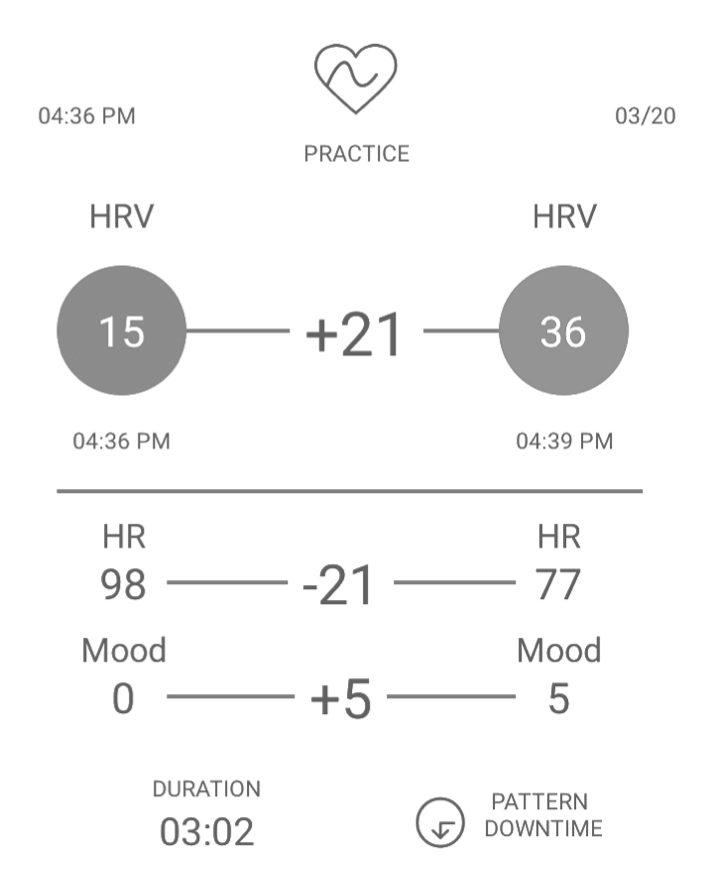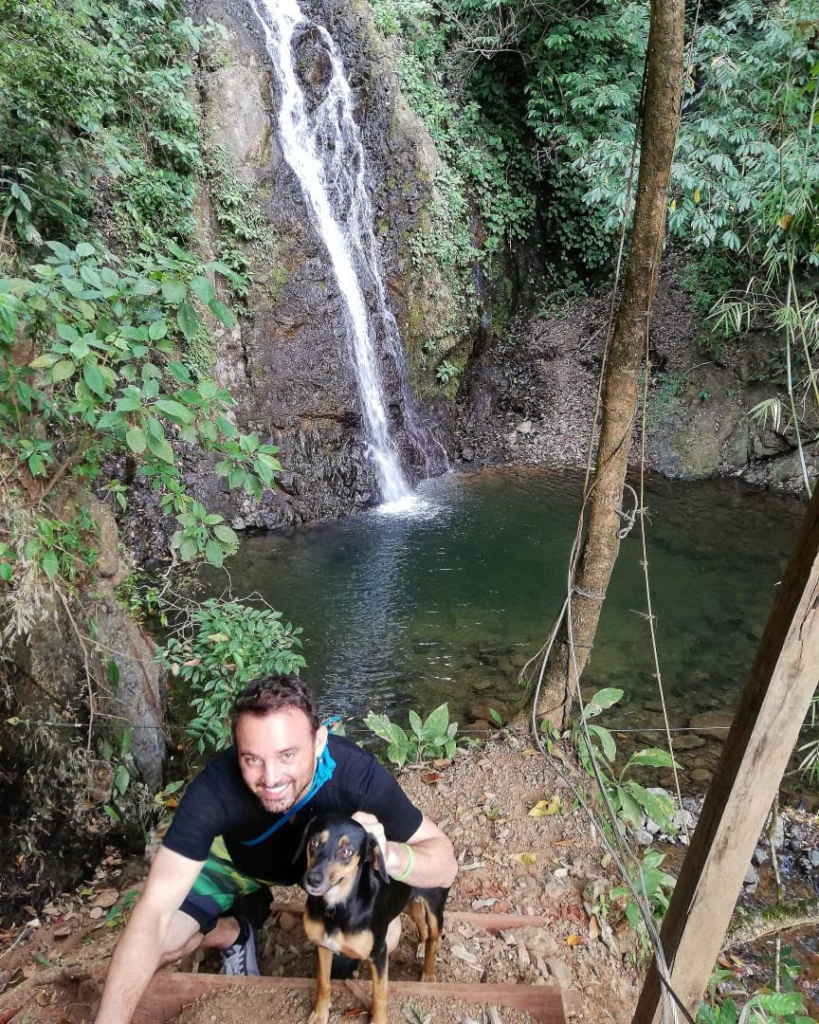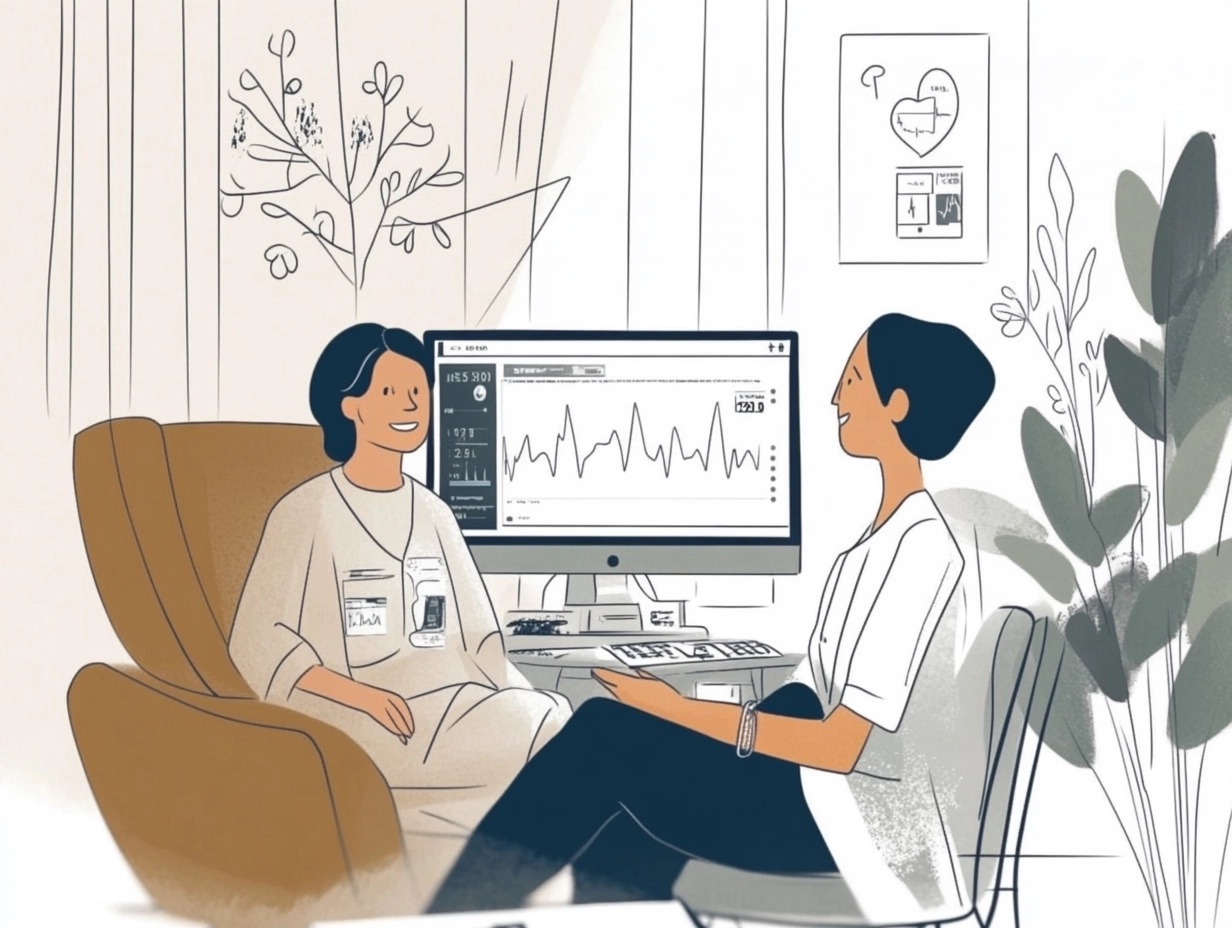Lief subscriber and long time biohacker, Seva, shares his journey toward achieving better mental and physical health using his Lief.

Tell me about yourself.
I worked in the tech world for 20 years. I always had a slight level of depression and anxiety as far as I can think back, which led me to a deep interest in personal development. I was biohacking before there was an official movement, starting from when I was 19 years old.
A few years ago, one of the things I would notice between my breaks at work was that I was so drained. I’d be just sitting / standing at my desk for two straight hours, and I’d feel so wiped out– especially due to the shallow breathing I tend to do while focusing on work. I wondered, what can I do during my breaks to get out of this mode? After trying a variety of things, I noticed that coherent breathing was significantly helping. That’s how I discovered this whole idea of breath being important.
How did you become interested in tracking your heart rate variability (HRV)?
People in my biohacker circles were constantly mentioning HRV. They would say things like, “Getting a good night’s sleep raised my HRV,” or “Eating this crappy meal, and drinking a ton before sleeping would lower my HRV.” So my natural curiosity made me investigate the topic. When I found out HRV is such an important biomarker of how you’re doing mentally and physically, I had to figure out a way to measure it. I knew that low HRV signals that your mind and body are currently experiencing more stress than it can handle. Shallow breathing is a part of that, but it’s not all of it.
How did you discover the Lief Smart Patch?
In August 2020 I caught some kind of infection, which is still undiagnosed. While my body was fighting this infection for months, I noticed that the more anxious I would get, the lower my HRV would get (based on my Oura ring reading), and the more symptomatic I would get. In other words, my low HRV and my symptoms would almost always correlate. This motivated me to want to get a continuous HRV monitor to assess what was happening. The Oura Ring is not continuous and you have to be still while it’s measuring your HRV. There’s a lot more limitations to the Oura Ring’s HRV measurements compared to Lief’s ability to measure HRV continuously.
I searched for “continuous heart rate variability monitoring” online. That’s how I came across Lief. I was particularly drawn to the fact that Lief is tailored towards individuals with anxiety and depression versus the other HRV wearables I found, which are tailored more towards athletes.
How has tracking your HRV with Lief helped you?
Even now, though my infection isn’t active, I noticed that if my HRV is low for a long time, I start sneezing and sweating, and my throat tenses up. The symptoms I had when my infection was active start up again. Knowing what my HRV is at any given moment is such a powerful and useful metric to understand what’s going on with my mind and body. I feel like maybe I could have prevented the infection from happening altogether if I’d started tracking my HRV sooner. I would have been able to know that my HRV was low throughout the day and intervened in the moment.
I believe this is the case because when I’m under stress and my immunity is low, I’m in fight or flight mode. I used to be in fight or flight mode pretty much the whole day. I think being in that mode all the time was one of the reasons I would get the flu and it would last for weeks. I truly think my low HRV played a role. Here’s how I know that what I’m saying has validity for me: Ever since I got my Lief a few months ago, I haven’t had a sore throat. Before using Lief, I would get a sore throat every one to two weeks.
What do you value most about tracking your HRV continuously throughout the day?
It’s important because you think you know how much something is stressing you out, but you might not understand the full picture. It’s useful to see: How are meals affecting you? How are interactions with certain family members affecting you? We can guess what our body is telling us, but we can’t beat what science is showing us. You can subscribe to Lief for a month, and just see what your mind and body are feeling — is it matching what your HRV is saying throughout the day? To me, your HRV is the ultimate truth. You’ll be surprised how often it matches with what you’re feeling mentally and physically.
What do you do with your HRV information?
Initially I was worried because I didn’t realize that sometimes it’s okay for my HRV to be low. After doing my own research and chatting with my Lief coach, when I see my HRV is low, I’ll ask myself: Should it be low? Am I working out? Am I walking very fast? If yes, then my sympathetic nervous system is supposed to kick in, and that’s fine. If I’m just sitting there and my HRV is in the single digits, then that’s not great. That’s when I’ll make sure to fix my posture and pace my breathing and my HRV will start going up a lot.
The other advice I have for someone going through this: Find your calm spot that you can always go back to when your HRV is low. For me, it’s lying down on my back or sitting cross legged against the wall with a pillow behind me; when I do this, my HRV will naturally rise. In contrast, if I sit in a regular chair my HRV will continue slowly dropping because I’m not the most comfortable.
What do you value most about the Downtime practice?
I kinda created my own way of doing the Downtime pattern. From my understanding, most people have an optimal breathing rate of between 5 – 6 breaths per minute. I used my Lief to figure out what my optimal paced breathing is. Now I do a 4.7 inhale and 5.3 exhale, which is 10 seconds total, 6 breaths per minute. I toyed with those numbers and the Lief confirmed that that’s my optimal breathing rate. I’ll focus on breathing at that pace and my HRV will start going up a lot. I’m usually able to raise my HRV from 15 to over 35. Of course it’s going to be different for everyone.

What I like about the automated Downtime exercise is that it reminds me to stop what I’m doing, focus on my breath, and maybe close my eyes. The more I do these things, the higher my HRV goes. Sometimes I’m busy and just trying to get out of the red zone, so I’ll check a few things like my posture and my breath rate, and my HRV will go up enough for me.
What advice would you give to others who are just getting started with their Lief?
Assuming you’re using Lief for anxiety and depression, I would start noticing which events throughout your day are causing your HRV to drop. As my Lief coach recommended, take a few minutes of timeout and do the Downtime practice when you’re feeling stressed, and, if possible, preemptively do a Downtime practice before a stressful event. Imagine yourself successfully participating in that event, and feeling good. See what kind of little things you can change throughout your day to help you feel relaxed, like posture, breathing, or maybe smelling essential oils. What kind of small changes can you make to help raise your HRV?
How did Lief help you with your mental health?
Two main ways that Lief helped my anxiety and depression were the alerts that let me know I’m in the red when I didn’t need to be, and helping me understand what works for me. Initially after being diagnosed with anxiety, I went on YouTube and watched like 50 videos on different tools that could supposedly improve my mental health. What I was quickly realizing was that some strategies were working for me, and some weren’t. Sure, a strategy may work for 90% of people and they published 50 studies proving it, but does it work for me? That’s the key. This is where Lief was instrumental for me.
For example, when I dip my face in cold water, it shows that it raises my HRV. However, what works for me isn’t necessarily going to work for someone else. The things that are going to lower your anxiety and work for your body and mind, it’s so individual, and that’s why the Lief is so powerful. As a side note, even though Lief emphasizes the mental health aspect, I think it could also improve the life of anyone who just wants to optimize their health overall.

Can you share a brief example of how you like to use your Lief in any given day?
I wake up and my Lief is already charged. I charge it overnight since it’s not really meant to be worn at night, so my Oura ring takes over during that time. I put on my Lief right after I wake up and do a breathing practice. I do Dr. Andrew Weil’s 4-7-8 breath. Eventually I’ll go dunk my face in cold water: I exhale, and then I dunk my face for 15 seconds, take a breath, then do it again, for a total of 30 seconds. It’s a biohacker move, but also a beauty hack apparently! It’s anti-inflammatory. Throughout this time I’m monitoring my Lief to see if my routine is raising my HRV.
If my HRV isn’t going up, I’ll take that as a sign that I should have a more chill, rest-and-relax kind of day. Throughout the day, when my Lief alerts me through the auto-dosing to check on my HRV, I go through my mental list to see what I can improve. That’s what I really like about my Lief. It’s taking everything into account: my posture, my breathing, etc. to show me what my HRV is doing. If I correct my posture and see my HRV go up, well hello! That’s amazing.
I’m still trying to figure out: What is my optimal diet? How does a hard workout vs. a soft workout effect things? I’m still using my Lief in my day-to-day life a lot. But once I get things optimized it’ll be more of a hands off thing for me.
The other main thing is I know that if my HRV drops too low, I’ll start sweating and get symptomatic, so until I figure out what’s going on internally, I’m going to be relying on my Lief a lot. If I can keep my HRV at least in the yellow zone, if not higher, throughout most of the day, my odds of getting another infection or illness becomes significantly lower. I imagine people who aren’t dealing with a health issue won’t need to monitor their data as often as I do.
Anything else you’d like to share?
I’m currently in an outpatient program for my anxiety and depression. Some of the people in my program are on tons of medications, and it seems like they’d rather do that than try something like Lief. I don’t want to push anything down someone’s throat, but I wish I could open up people’s minds since I believe Lief could really help them.

I used to be very cold intolerant with the illness, but I slowly got over that. Now I can do things like take colder showers and dunk my face in cold water, which has been huge for reducing my stress throughout the day. Before having Lief and figuring out my breathing rate, my coping mechanism was to literally run to my bed, lie down on my side, and focus on my breathing. I had no way to validate whether it was working, but it seemed to make me less symptomatic. Now, my Lief validates that what I’m doing is truly working for me.
This interview has been edited for brevity and clarity.





Leave a Reply
You must be logged in to post a comment.